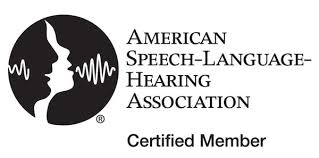
To use in your report, highlight text first then:
COPY
WINDOWS: Ctrl + C
MAC: Command + C
PASTE with no Formatting
WINDOWS: Ctrl + Shift + V
MAC: Shift + Option + Command + V
PASTE with Formatting
WINDOWS: Ctrl + V
MAC: Command + V
**Use for templates with tables**
Social Language Development Test-Elementary: Normative Update (SLDT-E:NU)
The Social Language Development Test-Elementary: Normative Update (SLDT-E:NU) is a diagnostic test which asseses loanguage based skills of social interpretation with friends, the skills found to be most predictive of social language development for elementary students between the ages of 6:0 and 11:11. The tasks focus on taking someone else’s perspective, making correct inferences, negotiating conflicts with peers, being flexible in interpreting situations, and supporting friends diplomatically. The test features four subtests: Making Inferences, Interpersonal Negotiations, Multiple Interpretations, and Supporting Peers. These tasks reflect the developmental refinement of social language and comprehension and expression and differentiate tupically developing childre with those with autism spectrum disorder.
| SLDT-E Subtests | Standard Scores |
| Making Inferences: The student takes the perspective of someone in a photograph and, based on the context clue (facial expression, gesture, posture, background clues, etc.), tells what the person is thinking as a direct quote from the character | |
| Task A: Expressing Someone’s Thoughts: The student imagines being the person in a photo and states a relevant thought from that character’s perspective | |
| Task B: Stating Visual Clues: The student states the relevant visual clues suggesting the character’s thought. | |
| Interpersonal Negotiation: The student is asked to imagine being in a conflict situation with a friend. The student must state the problem, propose an appropriate solution, and explain why that solution would be a good one. | |
| Task A: Stating Problems: The student is required to understand a conflict with a friend and state the problem accurately. | |
| Task B: Stating Solutions: The student must propose a logical way to solve the problem. | |
| Task C: Justifying Solutions: Having proposed a logical solution, the student must justify the solution as a good way to solve the conflict with a friend. | |
| Multiple Interpretations: The student provides two distinctively different, plausible interpretations of the same photo. | |
| Supporting Peers: The student assumes the perspective of a main character in a situation with a friend. The student tells the friend something that supports or pleases the friend, even if the comment doesn’t match the student’s true belief (e.g., white lie). | |
| Social Language Development Index |
Making Inferences: (The student takes the perspective of someone in a photograph and, based on the context clue (facial expression, gesture, posture, background clues, etc.), tells what the person is thinking as a direct quote from the character.) XXX’s standard score of ?? is ABOVE/WITHIN/BELOW the average range of other students HIS/HER age.
Task A: Expressing Someone’s Thoughts: (The student imagines being the person in a photo and states a relevant thought from that character’s perspective.) XXX’s standard score of ?? is ABOVE/WITHIN/BELOW the average range of other students HIS/HER age. DISCUSS PERFORMANCE.
Task B: Stating Visual Clues: (The student states the relevant visual clues suggesting the character’s thought.) XXX’s standard score of ?? is ABOVE/WITHIN/BELOW the average range of other students HIS/HER age. DISCUSS PERFORMANCE.
Interpersonal Negotiations: (The student is asked to imagine being in a conflict situation with a friend. The student must state the problem, propose an appropriate solution, and explain why that solution would be a good one.) XXX’s standard score of ?? is ABOVE/WITHIN/BELOW the average range of other students his age.
Task A: Stating Problems: (The student is required to understand a conflict with a friend and state the problem accurately.) XXX’s standard score of ?? is ABOVE/WITHIN/BELOW the average range of other students HIS/HER age. DISCUSS PERFORMANCE.
Task B: Stating Solutions: (The student must propose a logical way to solve the problem.) XXX’s standard score of ?? is ABOVE/WITHIN/BELOW the average range of other students HIS/HER age. DISCUSS PERFORMANCE.
Task C: Justifying Solutions: (Having proposed a logical solution, the student must justify the solution as a good way to solve the conflict with a friend.) XXX’s standard score of ?? is ABOVE/WITHIN/BELOW the average range of other students HIS/HER age. DISCUSS PERFORMANCE.
Multiple Interpretations: (The student provides two distinctively different, plausible interpretations of the same photo.) XXX’s standard score of ?? is ABOVE/WITHIN/BELOW the average range of other students HIS/HER age. DISCUSS PERFORMANCE.
Supporting Peers: (The student assumes the perspective of a main character in a situation with a friend. The student tells the friend something that supports or pleases the friend, even if the comment doesn’t match the student’s true belief (e.g., white lie).) XXX’s standard score of ?? is ABOVE/WITHIN/BELOW the average range of other students HIS/HER age. DISCUSS PERFORMANCE.





